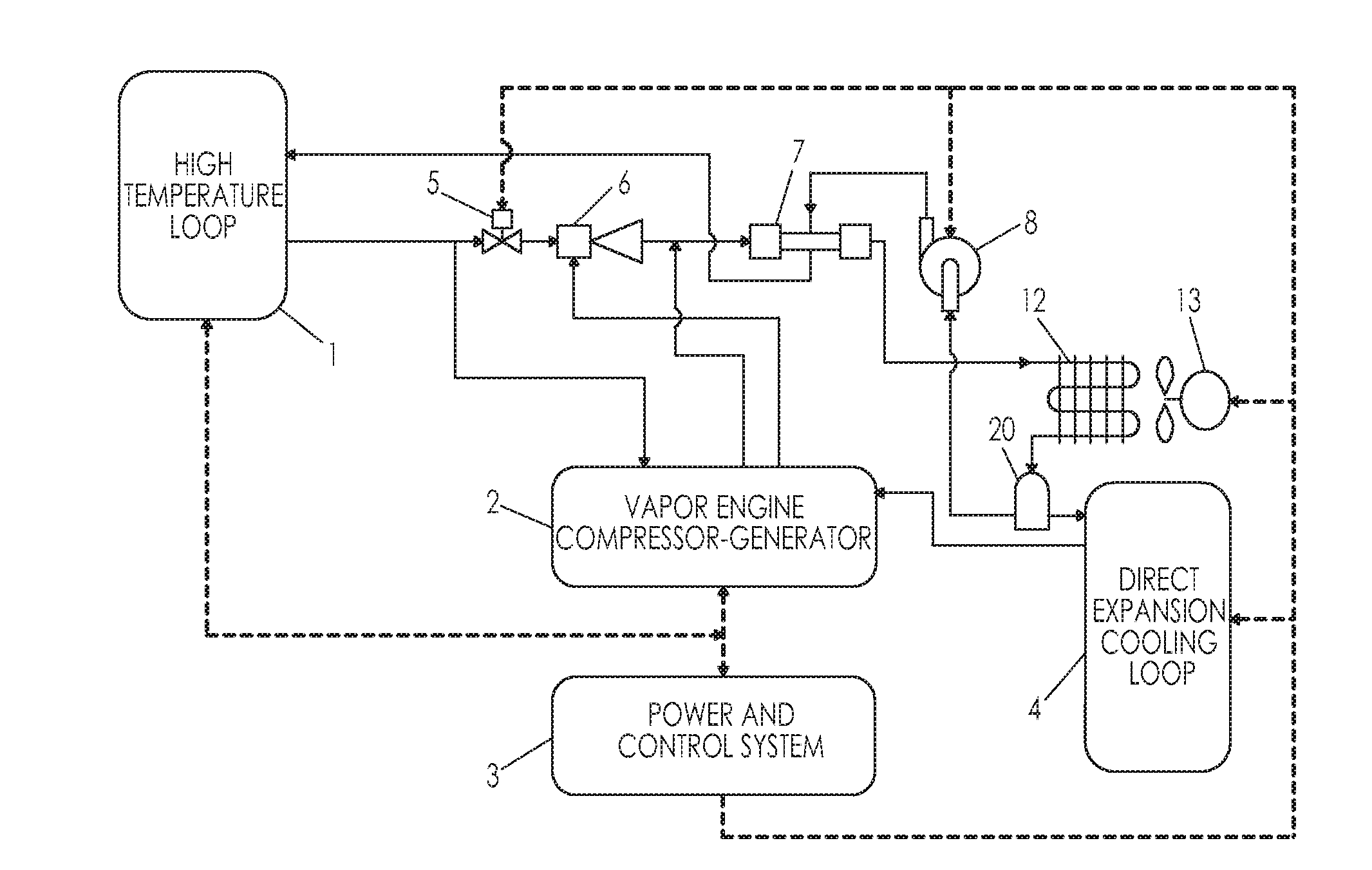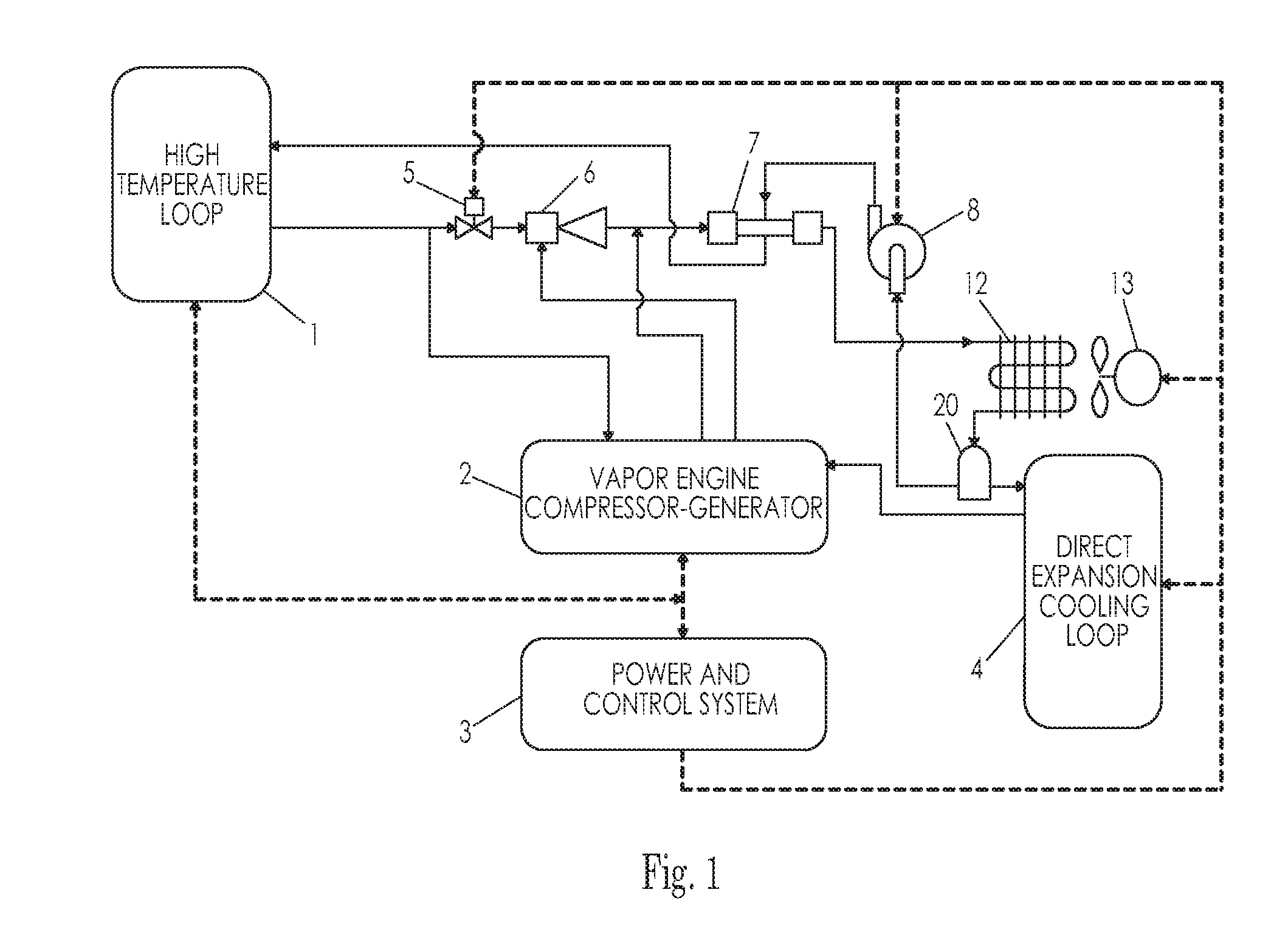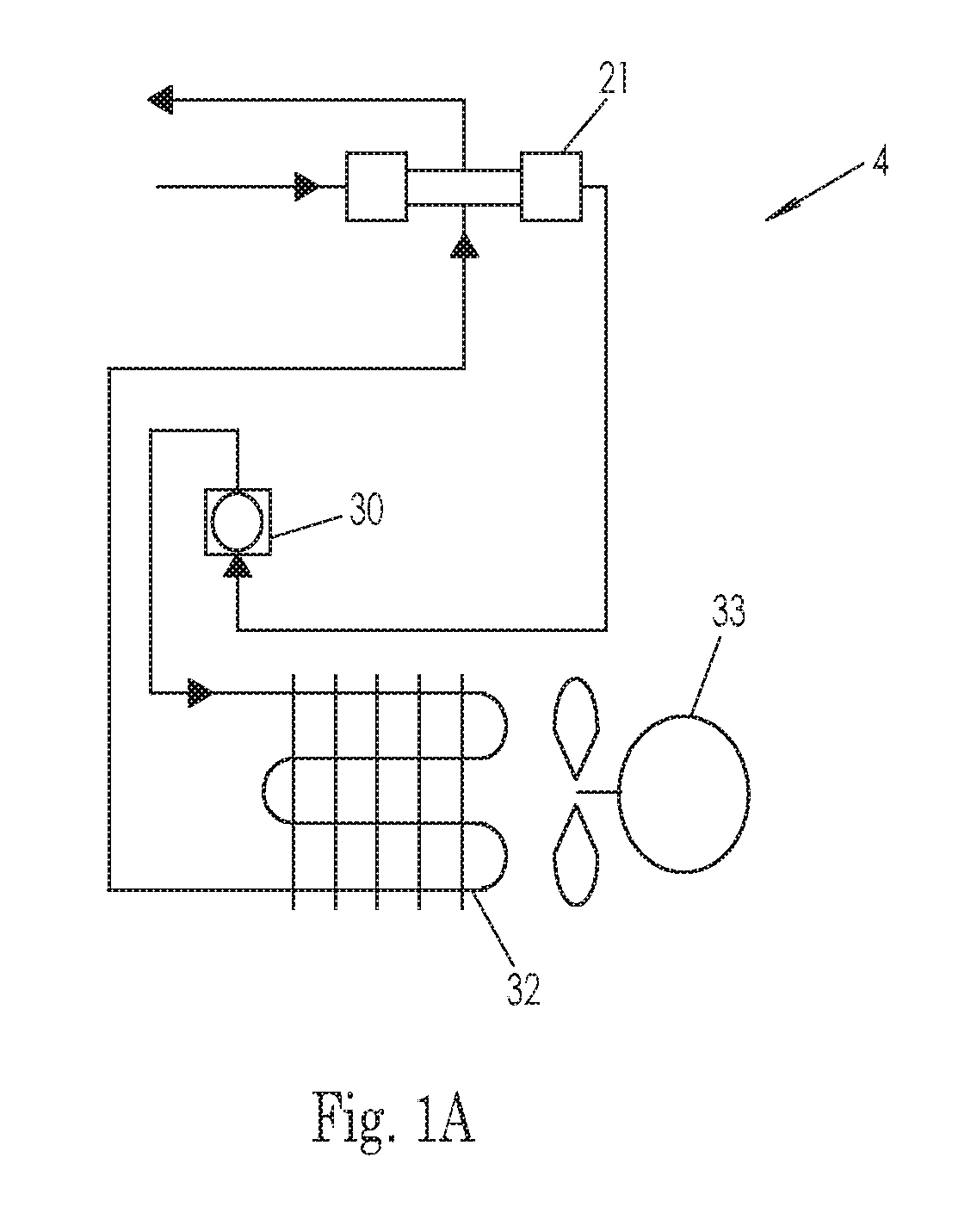Mechanically Enhanced Ejector HVAC and Electric Power Generation System
a technology of ejector and electric power generation system, which is applied in the direction of machine operation mode, light and heating apparatus, transportation and packaging, etc., can solve the problems of system difficulty in adapting to new conditions, system that had previously been excellent solutions become costly, awkward and ineffectual,
- Summary
- Abstract
- Description
- Claims
- Application Information
AI Technical Summary
Problems solved by technology
Method used
Image
Examples
examples
[0097]Typical sources of energy input for Class 8 truck in various operating environments
[0098]System COP=total system capacity / non-waste heat energy input
EXAMPLE 1Operation Condition:Engine off at rest stop in hotclimate-no utility grid connectionAir Conditioning 3 kWRequirement:Heating Requirement:NONESystem COP*:0.92Non-Waste Energy 3.25 kWInput Required:Thermal Sources:Fuel-fired heat*-3.10 kWRecovered air-conditioning heat-0.50 kWElectrical Sources:System generated from fuel-fired heat-0.80 kWStored energy from battery*-0.15 kW
EXAMPLE 2Operation Condition:Engine off at rest stop in hot climate-with utility grid connectionAir Conditioning 3 kWRequirement:Heating Requirement:NONESystem COP*:2.44Non-Waste Energy 1.23 kWInput Required:Thermal Sources:Recovered air-conditioning heat-0.20 kWElectrical Sources:Utility Grid*-1.23 kW
EXAMPLE 3Operation Condition:Engine off at rest stop in cold climate-no utility grid connectionAir Conditioning NONERequirement:Heating Requirement: 2 ...
PUM
 Login to View More
Login to View More Abstract
Description
Claims
Application Information
 Login to View More
Login to View More - R&D
- Intellectual Property
- Life Sciences
- Materials
- Tech Scout
- Unparalleled Data Quality
- Higher Quality Content
- 60% Fewer Hallucinations
Browse by: Latest US Patents, China's latest patents, Technical Efficacy Thesaurus, Application Domain, Technology Topic, Popular Technical Reports.
© 2025 PatSnap. All rights reserved.Legal|Privacy policy|Modern Slavery Act Transparency Statement|Sitemap|About US| Contact US: help@patsnap.com



